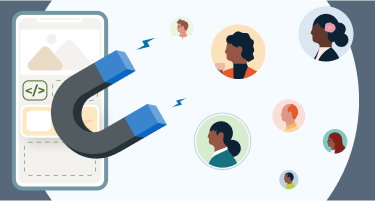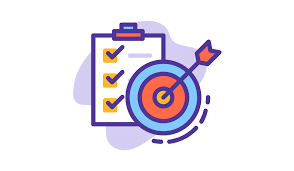How to Reduce Churn for Your B2B Website
Churn can seriously harm your B2B SaaS company's profits, even with a strong customer acquisition strategy. Keeping your current customers and users satisfied is key to sustained growth. Without properly measuring and addressing churn, you'll face a significant business challenge that only grows as you scale.
When churn becomes a major issue, companies often need to quickly change their product roadmaps. This can force them to backtrack and fix underlying problems causing customer loss.
Some Churn Can Be Beneficial
It's important to understand that some churn can be beneficial. Churn can be divided into four types: voluntary, involuntary, good, and downgrade. Good churn involves losing customers who weren't ideal for your product, which can reduce support strain and prevent negative feedback.
In this article, we'll reveal the ways to reduce voluntary churn, as it's most closely linked to customer experience and can be influenced by customer success teams.
Lasting Effects of Net Negative Churn
Research shows that net negative B2B churn can boost a company's bottom-line by a whopping 25%, even if you reduce by just 5%. When it comes to the compounding impact of net negative churn,the results are striking. Over five years, companies with just 2.5% negative churn would grow nearly 3X larger than ones with positive churn, starting from the same point.
Even if your company has zero percentage churn, it would have almost 60% more monthly recurring revenue than one with a net positive churn of 2.5% after five years. This demonstrates how churn effects accumulate over time, significantly impacting your company's revenue and longevity.
Churn Reduction Is a Multifaceted Effort

While many companies focus on customer success strategies to address churn, this is just one part of a complex process. There's no single solution for managing churn. Instead, it requires ongoing optimization across all aspects of your business, emphasizing value addition and customer experience.
We'll now outline some strategies you can start implementing today to reduce your churn rate and potentially achieve net negative churn. Regardless of your B2B SaaS company's growth stage, the sooner you apply these strategies, the faster and more sustainable your company's growth will be.
Track Everything to Reduce B2B Customer Churn
You can't improve what you don't measure. Go beyond just tracking churn rates. Examine usage metrics for products to understand user behavior and detect early indicators of possible churn. This helps you identify friction points and success milestones.
While specific events to monitor vary by product, consider these universal stats to assess baseline churn and retention health:
1. Onboarding Metrics
Every product has an 'Aha' moment when users first experience its core value. The longer it takes to reach this point, the higher the churn risk. Examples include:
When users connect your solution to their CRM
When they create and launch the first campaign
For free trials, examine the number of users who don't convert to paid customers. Identify common drop-off points in the setup process.
2. Use Surveys to Uncover Issues
Net Promoter Score (NPS) surveys gauge customer loyalty with one key question:
"How likely are you to recommend this product to a friend or colleague?"
NPS results categorize respondents as:
Promoters (9-10): Loyal and enthusiastic
Passives (7-8): Satisfied but not enthusiastic
Detractors (0-6): Unhappy
Each group needs a different approach. Address detractors urgently, especially high-value customers. Don't neglect passives or promoters, as their status can change with a single experience.
Complement NPS with transactional surveys to assess specific interactions.
3. Gather Direct Customer Feedback
Quantitative data alone isn't enough. Collect qualitative feedback to understand why customers leave. This prevents costly assumptions, especially for users who don't convert after free trials.
Asking for feedback also shows customers you care. Research indicates 68 percentage of users leave because they feel vendors don't care about them.
Link Customer Data to Financials
Connect your customer experience program to financial data. This helps you:
Identify high-value customers
Prioritize retention efforts
Track the financial impact of your churn reduction strategies
4. Optimize the Onboarding Experience
A smooth onboarding process helps customers quickly see your product's value. This leads to a positive experience and reduces early churn.
Consider these tools to enhance onboarding:
Product Tours: Use software like Userpilot or Appcues for interactive walkthroughs
Email Automation: Leverage platforms like Userlist to send targeted onboarding emails
Data Onboarding: Use solutions like Flat File to simplify data import and integration
5. Identify and Address Weaknesses
Review customer feedback to pinpoint your strengths and weaknesses. Listen to complaints, as they often reveal larger product issues. Once identified, work on making necessary improvements.
6. Spot Warning Signs of Customer Departure
Pay attention to indicators that suggest a customer might leave. Customer satisfaction surveys can help you monitor changes in sentiment. Ask standardized questions regularly to track shifts in opinion.
One key question to include is whether customers would recommend your product to others. Any drop in this metric is a red flag.
Also, watch for unexplained changes in customer behavior, such as becoming hard to reach or canceling meetings. These can signal potential issues.
By identifying these early signs, you can take steps to reduce B2B customer churn.
7. Take a Strategic Approach to Retention
Don't try to retain every at-risk customer. Instead, focus on keeping your most valuable clients. Segment your at-risk customers and prioritize efforts on the bestones.
Examine the reasons behind potential churn. You might find some quick fixes, like providing more training or contacting a new contact after staff changes at the client company.
8. Boost Product Stickiness
The B2B SaaS space has evolved. Companies now use multiple specialized tools instead of a single enterprise-wide solution. This makes it easier for users to switch between products.
To combat this, provide native integrations with other SaaS apps your customers use.
When your product integrates seamlessly with users' workflows and other tools, it adds more value and makes it difficult for users to go for your competitors.
9. Align Teams Around Retention
Often, different teams have their own success metrics. Marketing focuses on leads, sales on closed deals, and product teams on feature releases. While these metrics matter, they can create silos that hinder churn reduction efforts.
Align all teams around improving retention. Communicate how churn impacts the company's bottom line. This can lead to significant changes:
Developers focusing on resolving bugs instead of adding new features
Product managers focusing on commonly requested integrations
Customer success emphasizing key points in onboarding
Sales focusing equally on upsells and new acquisitions
Marketing creating campaigns for existing customers
10. Set Churn Goals and Run Experiments

Define concrete goals and steps for reducing your B2B churn. While your ultimate aim might be to "reduce churn by 2 % within 3 months," set shorter-term milestones to track progress.
Here are some examples of shorter-term goals and strategies:
Improve onboarding completion rates
Increase product usage among at-risk customers
Boost customer satisfaction scores
Reduce time to first value for new users
Increase adoption of key features
By implementing these strategies, you can effectively work towards reducing B2B customer churn and improving your business's long-term success.
Conclusion
To wrap up this comprehensive guide on reducing B2B customer churn, remember that churn reduction is an ongoing process that requires attention from all areas of your business. By implementing these strategies, you'll not only retain more customers but also build stronger, more profitable relationships.
Key takeaways include:
Track and analyze customer behavior meticulously
Gather and act on customer feedback
Optimize your onboarding process
Focus on your valuable users
Integrate your product seamlessly with clients' workflows
Align your entire team around retention goals
Reducing churn isn't just about keeping customers; it's about creating a product and experience that provides ongoing value. As you work to implement these strategies, you might find that your user experience needs improvement.
Ready to take your churn reduction efforts to the next level?
Our AI Design Agency can help you create a seamless, user-centric experience that keeps customers engaged and loyal. Contact us today to learn how we can optimize your product for maximum retention and growth.
By consistently applying these strategies and focusing on user experience, you'll be well on your way to reducing churn and fostering long-term customer relationships that drive your B2B SaaS business forward.
FAQ’s:
1. What's a good churn rate for B2B companies?
For established B2B SaaS companies targeting enterprises, aim for 5-7% annual churn. If you're newer or targeting smaller businesses, expect around 5% monthly churn. Remember, some churn is inevitable, but keep working to improve your rates over time.
2. How can you analyze churn rate effectively?
To analyze churn, follow these four steps: 1. Use predictive analytics to spot potential churners 2. Invest in subscription analytics for deeper insights 3. Look at different customer segments separately 4. Identify the type of churn you're experiencing, then take action
3. What's the key performance indicator (KPI) for churn rate?
The Customer Churn Rate KPI measures how many customers you're losing. Calculate it by dividing the number of lost customers by the average total customers over a specific time period, then multiply by 100 for a percentage.
4. How do you spot churn?
To identify churn, use this simple formula: (number of lost customers ÷ total customers during a time period) x 100. This gives you your churn rate as a percentage. Keep track of this regularly to spot trends.
5. What are the warning signs of potential churn?
Watch out for these red flags: - Declining engagement: Customers using your product less often - Fewer interactions with your brand - Slower response to your communications These could all signal that a customer might leave soon. Stay alert and address these issues quickly to prevent churn.




